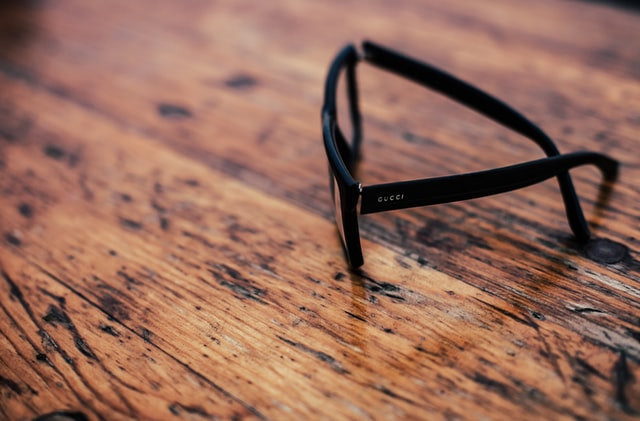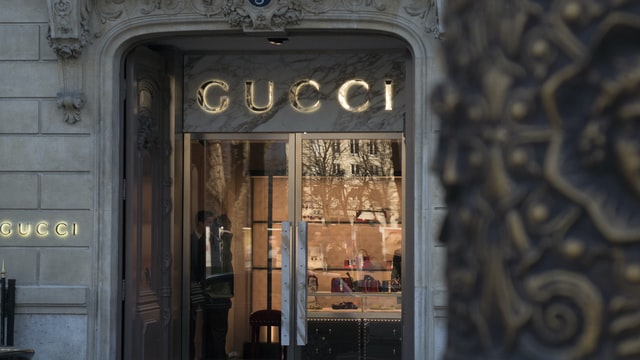
8 min
1
10.04.2022

To understand the true state of things in a company, students and businesses themselves use a Strengths, Weaknesses, Opportunities, and Threats (SWOT) analysis. It is conducted by many companies to plan their projects, analyze the competitors, and create an effective development strategy.
Students often perform a SWOT analysis as a part of their business studies to learn to assess the company’s market position and potential. Educational institutions often suggest fashion companies as a study case because even when new technologies arise, fashion is never left behind and forgotten. Read on to receive all the information you need on conducting a high-quality SWOT analysis of a fashion industry giant, Gucci.
About Gucci
Gucci is a famous and iconic Italian brand owned by the French company “Kering.” The brand was founded by its first creative director, Guccio Gucci, back in 1921. He was inspired to launch this high-pricing brand when he worked at luxury hotels and dealt with expensive luggage.
The brand has many product lines and, although based in Florence, Italy, has already reached the international market with products such as:
- Bags
- Shoes
- Apparel
- Watches
- Jewelry
- Accessories
Currently, there are more than 450 official Gucci stores all over the world. Gucci products can also be seen displayed in various magazines, television advertisements, and social media.
You can find more information about Gucci on the following websites:
Gucci Market Segmentation and Marketing Strategy

Many companies work with segmentation to understand better what their customers need or desire. The segmentation of Gucci can be divided into:
Demographic Segmentation
Gucci creates products for both females and males, whether they be children or adults. Some unisex items are also available.
Specifically, the brand is made for groups of people in higher social classes and have strong financial capabilities. According to Gucci, the people who love the brand have an affluent lifestyle and love to demonstrate their status with luxurious style pieces. Gucci doesn’t consider making products for people in the middle class or lower, as it is a high-end brand.
Behavioral Segmentation
According to Kotler, the brand’s image, the customer’s loyalty towards it, the consumer rate, and the market’s responsiveness are the elements of behavioral segmentation.
The Gucci brand has already created an excellent position in the marketplace because of its unique quality and prestigious brand image. The attitude and behavior of customers show high loyalty towards Gucci because the luxurious style and great quality of goods go alongside an excellent shopping experience. As of 2018, 50% of US consumers wanted to own branded items from Gucci.
Geographical Segmentation
Gucci products are all exclusive and high-quality. The brand takes into consideration all environmental regulations and possible external environments. Besides, this luxury fashion house is conscious of the locations where its products are distributed, with less than 500 directly operated stores available worldwide. The number of official Gucci stores in the US and Europe is nearly equal, 107 and 106 stores, respectively. Thus, it is clear that the brand controls its distribution channels effectively.
Psychological Segmentation
Gucci mainly focuses on this segmentation since it is targeting the lifestyle of its consumers. Throughout the years, Gucci’s audience and target market have been people with classy lifestyles like singers, film personalities, and celebrities whose decision when buying is greatly influenced by the social class they belong to. Many people desire to obtain a top-notch Gucci product more so because of the reputation and status that comes with owning one.
Target Market
As implied by Gucci’s segmentation, its target market is the high-status, high-income, and middle-aged employed consumers. Their customers have prestigious lifestyles and belong in high social classes, including celebrities, politicians, and other representatives of high-paying professions.
Market Demographics
The consumer groups that are more likely to use and buy Gucci products are people of any age and gender. However, they must have the financial capability of affording the company’s items and have a strong relationship with high-end brands and products.
Gucci Group SWOT Example

The sample SWOT analysis of Gucci that you will see below analyzes the brand’s strengths, weaknesses, opportunities, and threats. The strengths and weaknesses are both internal factors, while opportunities and threats are external factors. It’s a proven framework for managing such prestigious brands like Gucci to benchmark their business and market performance compared to competitors like Prada, Chanel, and other luxurious brands in the industry.
Case Study: SWOT Analysis of Gucci
The following is an example of a Gucci SWOT analysis:
Strengths
The strengths of the Gucci fashion brand include:
- A strong brand image and brand equity in the business environment
- A secure chain value with its suppliers and retailers, one of its most important current assets
- An excellent advertising and marketing strategy
- A vast collection of items in its massive product portfolios, such as clothing, accessories, apparel, and more.
- Influential partnerships. For instance, Gucci is currently a UNICEF partner as part of a Corporate Social Responsibility (CSR) initiative.
- The Gucci group also partners with automobile companies like Fiat, Ford, and General motors that add brand value.
Weaknesses
The weaknesses in the SWOT analysis of Gucci are:
- The emergence of many cheap fake imitations of Gucci products available in the market
- The need to invest a large amount of money in protecting and maintaining Gucci’s brand image
- The criticism in their market strategy through the years for Gucci’s use of sexuality in advertising
- The declining economy and the need for Gucci to adjust their business operations to it
Opportunities
The following are the opportunities of the Gucci group:
- Diversification of target markets and their templates. The younger generations nowadays are more conscious of the brands they purchase. Thus, Gucci can widen its target market with diversification and modern designs.
- Addition of Gucci’s competitive advantages. Besides their current high-quality and high-social status edge, Gucci can develop more advantages such as uniqueness in designs and creating a more affordable line for other markets.
- Expansion of consumption and profitability. Surfacing markets like India and China can be tapped by Gucci as there are groups in these countries who are fond of luxurious brands and products.
Threats
Lastly, the threats in the SWOT matrix of Gucci are as follows:
- Industry Competition. Several strong competitors can limit the market share growth for Gucci group in the industry, including brands like:
- Prada
- Christian Dior
- Burberry
- Ralph Lauren
- Louis Vuitton
- Chanel
- Market Vulnerability. Since it’s a global luxury brand, Gucci is vulnerable to price fluctuations, recession, etc.
- Consumers’ Perceived Value. Consumers may prefer another brand for specific subjective reasons.
- Consumers’ Practicality. Consumers can easily switch to new products or refuse to buy a luxury brand because of the declining economic stability.
Why Is It Important to Have a SWOT Analysis and Template for Brands Like Gucci?
The SWOT analysis of any brand or business is important as it helps in building the business well. It is something many companies do, be they high-end or not. Therefore, contributing to the minimization of all potential risks and external factors and gaining possible benefits and chances of success through SWOT analysis is a wise idea.
The SWOT matrix can also be used to understand the competitors and help brands gain insight into what they must do to be competitive in the industry.
Conclusion
Gucci is an iconic brand, famous for its luxurious and high-end products that are mostly worn and bought by famous and rich personas. As it’s a large and top-performing business, it’s important to prevent any potential risks in the business by developing a template of business strategies.
A SWOT analysis is crucial to identify what Gucci’s capable of and which focus areas it has in the large industry where many brands are competing for the attention of the luxury market consumers.



